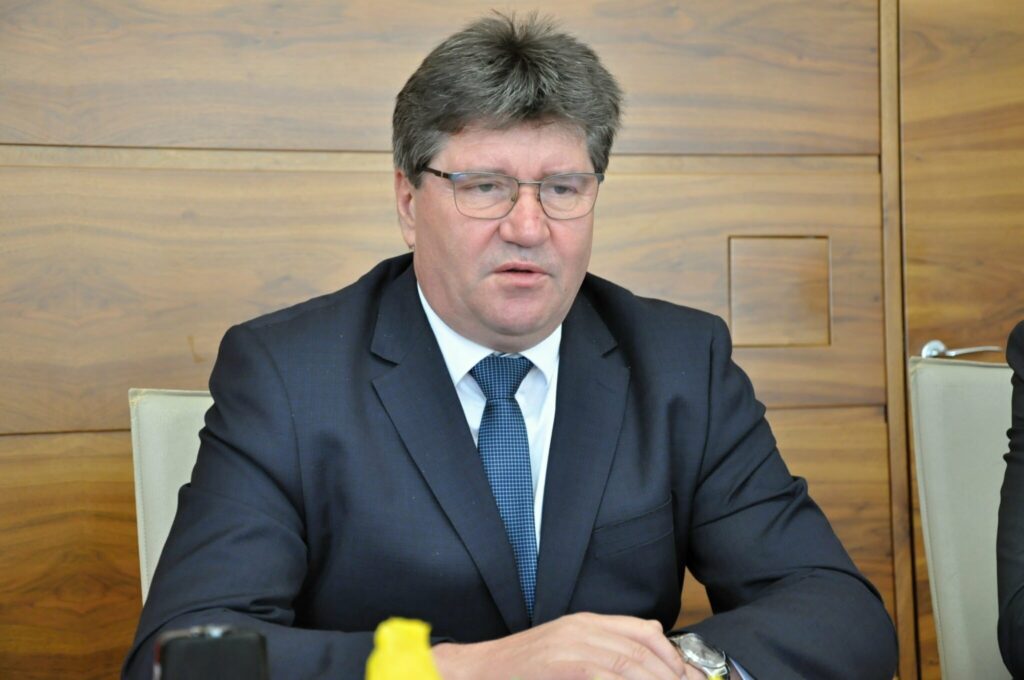“In addition to the migrant crisis, we also have the Roma problem and increasing amounts of violence. And the Roma people are probably also partly helping with smuggling the migrants. The Minister said that this was a coalition commitment and that there was not much he could do about it personally. We, the local people, know that we cannot influence European policy, which is currently in favour of migration. However, I expect them, above all, to protect our residents. The only people who can solve the problem are Prime Minister Robert Golob and Minister of Foreign and European Affairs Tanja Fajon,” says Ivan Molan, the Mayor of the most besieged municipality in Slovenia.
At the moment, it is the municipality of Brežice that is bearing the brunt of illegal migration. Minister of the Interior Boštjan Poklukar has announced that the border fence will be torn down, while on the other hand, contradictorily, the police presence in the most besieged areas will be increased.
We spoke to Mayor Ivan Molan about the issue at hand. In particular, we wanted to know how citizens feel about what is happening. “Our local residents, not only in Rigonce, but also in Slovenska vas, Rakovec and Bizeljsko, suggested from the very beginning that the panel fence along the settlements should remain, or at least next to the residential houses.” The Mayor pointed out that the panel fence had been erected virtually on private land, with the consent of the owners at the time, and was now to be demolished. The problem is, for example, in Slovenska vas, that the old fence protecting the industrial zone was removed and replaced by a new panel fence, but now it is to be removed, which means that private land would effectively be built over. It is true, however, that the people of Brežice have not objected to the removal of the fence in places where there are no villages (in fields, etc.).
Minister Poklukar’s hands are tied because of the coalition deal
“This is an issue at the European Union level that is not being properly addressed. There is a tacit agreement for the migrants to be literally allowed across borders. I believe that Croatia, which is in the Schengen area, should either reject these people or give asylum only to those who are really entitled to it. The fact is that this is an exploitation of asylum policy,” Molan stresses. As he says, migrants are usually registered in Croatia, then they travel by train to the last station in Croatia, then throw their documents away, come to Slovenia and reapply for asylum, saying they have no documents. Minister of the Interior Boštjan Poklukar pointed out that the problem is multifaceted. One of the biggest problems is certainly human trafficking and the fact that Germany needs new labour (around two million people). However, Slovenian policy is clearly too weak in this area to regulate the matter differently in Brussels.
“The only ones who can solve this problem are Golob and Fajon!”
The locals often turn to him for help, and he has already had a meeting with the Minister of the Interior (two months ago). “In addition to the migrant crisis, we also have the Roma problem and increasing amounts of violence. And the Roma people are probably also partly helping with smuggling the migrants. The Minister said that this was a coalition commitment and that there was not much he could do about it personally. We, the local people, know that we cannot influence European policy, which is currently in favour of migration. However, I expect them, above all, to protect our residents. The only people who can solve the problem are Prime Minister Robert Golob and Minister of Foreign and European Affairs Tanja Fajon.” The first step is to solve the problem in cooperation with Croatia, so that it does not let the illegals in, because they are literally being directed to Slovenia, and then to solve it at the European level.
“The government is more concerned about migrants than the safety of the locals!”
The situation is similar to 2015. Back then, the number of illegal crossings was as high as 10,000 to 15,000 a day, and now it is around 600 during the weekend, 200 a day, and even 1,300 one weekend. Slovenia has “become a Red Cross”, where migrants are simply rounded up and taken on their way to other countries. People are afraid, the elderly do not dare to leave their homes. Younger girls and boys no longer dare to go for walks. For the elderly, who work in the fields, it is uncomfortable when twenty young men walk past them. Fortunately, no major incidents have been reported yet, but there is never certainty in the case of strangers with an unknown life story. But the citizens of Brežice are also suffering because, for two months, no one has really reported on the extent of the migrant problem in the municipality. What is even sadder is that we have seen attempts to discredit the people who have drawn attention to the problem. Molan: “The government is more concerned about migrants than about the safety of the locals!”
Domen Mezeg


